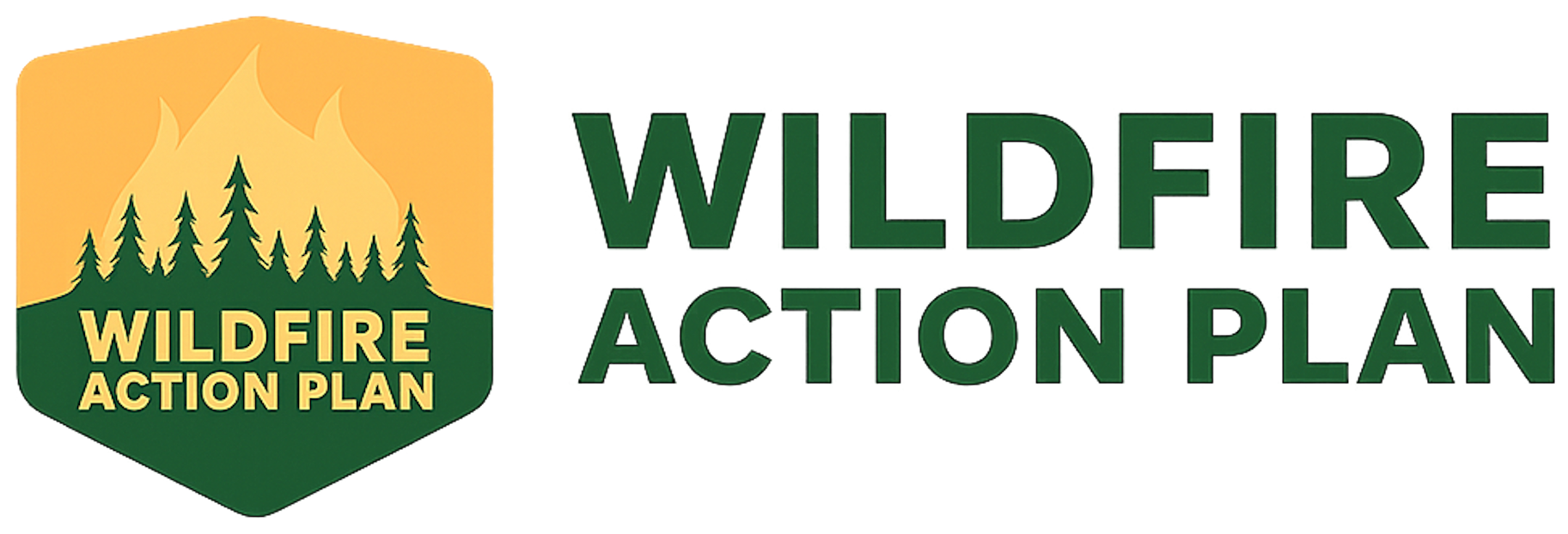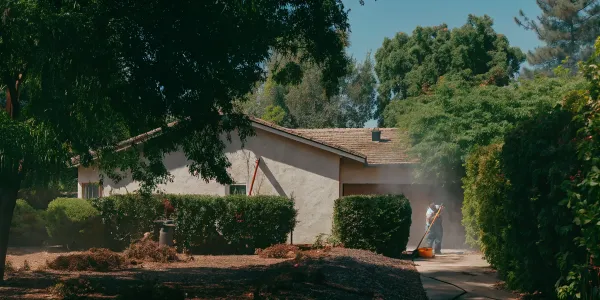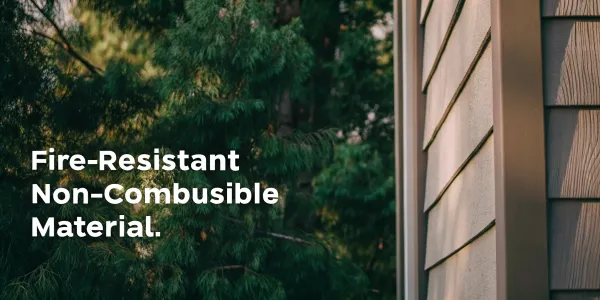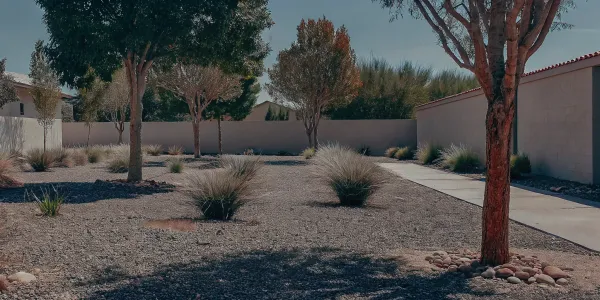How to Find the Wildfire Vulnerability Score for My Address
Learn how to find the wildfire vulnerability score for my address, what it means for insurance, and which steps can help lower your home’s wildfire risk.
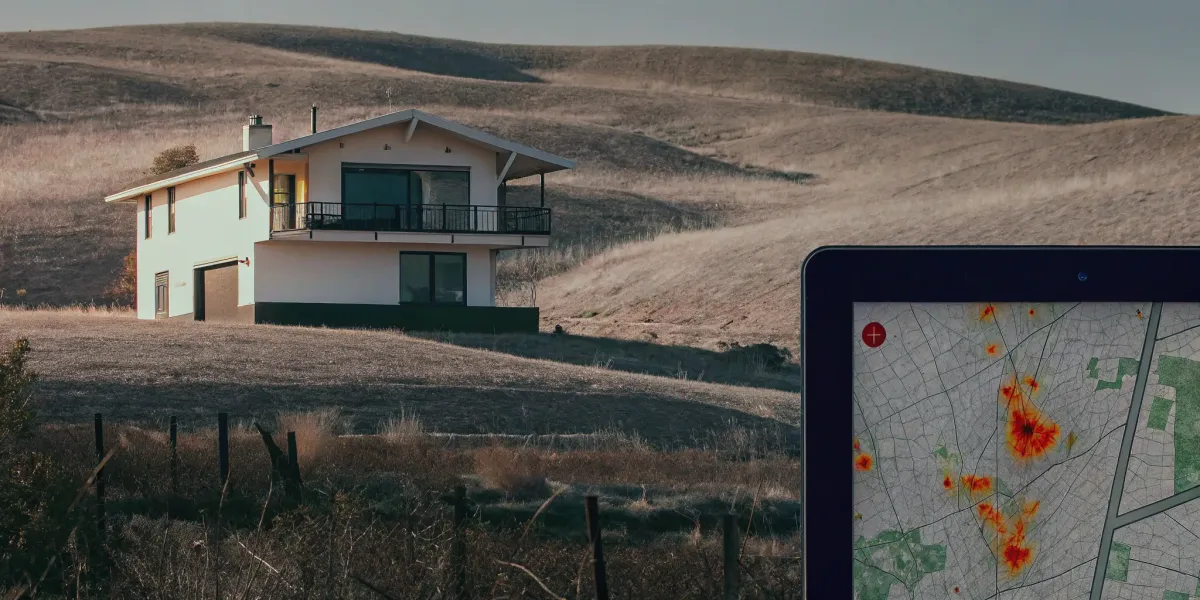
Your home is more than just a place to live; it’s your biggest financial asset. As wildfire risk grows, it’s starting to have a real impact on property values and a buyer’s willingness to invest. A key piece of this puzzle is your home’s wildfire vulnerability score. This rating is becoming as important as a home inspection, influencing not just insurance costs but a property’s long-term stability. Understanding the 'wildfire vulnerability score for my address' isn’t just about safety—it’s about protecting your investment and ensuring its value for years to come in a changing climate.
Key Takeaways
- Know Your Home's "Wildfire Credit Score": Insurers use a wildfire vulnerability score—calculated from your property's location, construction materials, and surrounding landscape—to assess risk and make coverage decisions.
- Your Score Explains Your Insurance Status: A high score is often the direct reason for non-renewal notices and steep premium increases, making it a critical number to understand if you want to maintain affordable coverage.
- You Can Actively Lower Your Risk: Your score isn't permanent. You can improve it and make your home more insurable by focusing on two key strategies: creating defensible space and hardening your home against embers.
What Is a Wildfire Vulnerability Score?
If you’ve ever applied for a loan, you know how important your credit score is. A wildfire vulnerability score works in a similar way, but for your home’s wildfire risk. Think of it as a grade that tells insurance companies how likely your property is to be damaged or destroyed in a wildfire. These scores are generated by complex computer models that analyze dozens of risk factors, from your roof material to the slope of your land.
While you can’t control every factor that goes into your score, understanding what it is and how it’s calculated is the first step toward protecting your home and keeping it insurable. Knowing your score gives you a clear, actionable starting point. It helps you see your property through the eyes of an insurer and focus your efforts on the improvements that matter most.
What Is a Wildfire Risk Assessment?
A wildfire risk assessment is the process of evaluating the specific threats your home and community face. At a broad level, government agencies like FEMA and the US Forest Service conduct assessments to help communities understand and lower their risk on a regional scale. They look at historical fire data, weather patterns, and the overall landscape to map out potential hazards.
For your property, an assessment is much more personal. It’s a detailed look at the unique features of your home and its immediate surroundings. An insurer’s model will analyze everything from the type of siding on your house to the species of trees in your yard. This detailed evaluation is what produces your final wildfire vulnerability score.
Why Your Score Matters for Insurance
Your wildfire score is a critical piece of the puzzle for your insurance company. In high-risk areas, especially across the West, insurers lean heavily on these scores to make decisions. A high-risk score can make it incredibly difficult or expensive to find coverage. Insurers use this number to decide whether to offer you a policy at all and, if they do, how much you’ll pay in premiums.
If you’ve received a non-renewal notice or seen your rates skyrocket, your property’s risk score is almost certainly the reason. Getting a handle on your score isn’t just about curiosity—it’s about taking back control in a challenging insurance market and finding a path to affordable coverage.
What Goes Into Your Wildfire Score?
Your score is a blend of factors related to your property, your home’s construction, and the surrounding environment. The models that calculate these scores look at the big picture and the tiny details. Key elements include the slope of your land, as fire travels faster uphill, and the types of vegetation nearby. The density of trees and brush is a major consideration.
They also analyze your home itself—the construction materials used for your roof, siding, and decks are all factored in. Finally, they assess access. How easy is it for emergency vehicles to reach your home? Are the roads wide enough, and is your driveway clearly marked? Each of these data points helps build a complete picture of your property’s unique risk.
How to Find Your Property's Score
Finding your home’s wildfire score isn’t always a straightforward process, but it’s a critical first step in understanding your risk. Insurers, government agencies, and private companies all use different models to calculate a score, which means your property might have several different ratings. Think of it less like a single, fixed number and more like a credit score—a data-driven assessment that can change based on who is doing the evaluation and what information they’re using.
The good news is that you have several ways to get a clear picture of your home’s vulnerability. You can access public tools, ask your insurance provider directly, or hire an expert for a hands-on evaluation. Each method offers a different piece of the puzzle, and using more than one can give you the most complete understanding of where you stand. Knowing your score is the starting point for taking meaningful action to protect your home and family.
Where to Find Official Assessment Tools
A great place to start is with publicly available data from government agencies. The USDA Forest Service created the Wildfire Risk to Communities website, a free and powerful tool designed to help homeowners and community leaders understand their specific risks. By entering your address, you can see a detailed breakdown of your area’s wildfire likelihood, the potential exposure of homes to flames and embers, and how vulnerable your community might be. This resource gives you an objective, science-backed view of the landscape-level risks that influence your property’s safety, providing a solid foundation for your preparedness efforts.
Getting Your Score from an Insurer
Your insurance company almost certainly has a wildfire risk score for your home, especially if you live in a high-risk state like California. Insurers use sophisticated models to generate these scores, which heavily influence their decisions on whether to offer you a policy and how much to charge for your premium. You have the right to ask your insurer what score they have assigned to your property. While some companies are more transparent than others, asking directly is an important step. Understanding the score your insurer uses is key to figuring out what home hardening and defensible space improvements they value most.
Hiring a Professional for an Evaluation
If you want a more personalized and detailed assessment, consider hiring a professional. A certified wildfire mitigation specialist or a knowledgeable local fire expert can conduct an on-site evaluation of your property. They will walk your property line, inspect your home’s construction materials, and analyze your landscaping with a trained eye. This type of hands-on assessment provides specific, actionable recommendations tailored to your home’s unique vulnerabilities. It’s an especially smart move if you’ve received a high-risk score from an online tool or your insurer and need a clear roadmap for reducing that risk.
How to Read Your Risk Report
Once you have a score, you need to understand what it means. Many public-facing tools, like those found on real estate websites, use a simple 1-to-10 scale. For example, a Fire Factor™ score of 1 indicates minimal risk, while a 10 signals extreme risk. Your report should break down why you received that score, pointing to factors like surrounding vegetation, roof type, or slope. Pay close attention to these details, as they are your clues for what to fix. Understanding the components of your risk report is essential for making informed decisions and prioritizing the actions that will have the biggest impact on protecting your home.
What Factors Affect Your Score?
A wildfire risk score isn’t a single, arbitrary number. It’s a complex calculation based on dozens of data points about your property, your house, and even your entire neighborhood. Think of it as a detailed portrait of your home’s vulnerability. Insurers and risk modelers look at everything from the type of roof you have to the steepness of your driveway. Some of these factors, like the local terrain, are out of your control. But many others—like your home’s building materials and the landscaping right outside your door—are things you can actively manage.
Understanding what goes into your score is the first step toward lowering your risk and proving to insurers that your home is a safer bet. When an insurance company sees a high score, they see a higher probability of a costly claim. This is why so many homeowners in high-risk areas are facing non-renewals or staggering premium increases. By learning how these scores are calculated, you can focus your efforts on the improvements that matter most. It puts you back in the driver's seat, allowing you to take concrete steps to protect your home and make it more insurable.
Your Home's Location and Terrain
Where your home is situated plays a huge role in its risk profile. Proximity to dense vegetation, like forests or chaparral, is one of the most significant factors. The models also analyze the surrounding terrain. A home at the top of a steep, brush-covered hill is at much greater risk than one on a flat, clear lot because fire travels incredibly fast uphill. Assessors also look at whether your home is in a canyon or on a ridge, as these landforms can channel wind and intensify fire behavior. While you can’t move your house, you can manage the vegetation on your property to counteract some of this inherent risk.
Construction and Building Materials
Two homes in the same neighborhood can have vastly different risk scores based on how they were built. The materials used in your home’s construction are critical. Insurers look closely at your roof (is it a Class A fire-rated material like asphalt shingles or metal?), your siding (stucco and fiber cement are better than wood), and your windows (dual-pane tempered glass is more resistant to heat than single-pane). Even small details matter, like whether your vents are covered with fine metal mesh to block embers. The overall fire resistance of the home is a key part of the equation, and it’s one of the most effective areas for improvement.
Defensible Space and Landscaping
Defensible space is the buffer you create between your home and the flammable vegetation surrounding it. This is a non-negotiable for lowering your wildfire risk. It involves clearing dead plants, leaves, and pine needles, especially within the first five feet of your home—an area known as the ember-resistant zone. It also means trimming trees, removing flammable shrubs, and creating a landscape that slows fire instead of fueling it. Creating defensible space is one of the most powerful actions you can take, as it gives firefighters a chance to save your home and prevents a small ember from turning into a full-blown disaster.
Road and Emergency Vehicle Access
If firefighters can’t get to you, they can’t protect your home. Your property’s score is affected by the accessibility for emergency vehicles. A home on a narrow, winding road with an overgrown driveway is harder to defend than one with clear, wide access. Insurers and fire officials consider the width of your road, the clarity of your street signs, and whether a fire engine has enough space to turn around. While you may not be able to repave your street, you can ensure your driveway is clear and your address is clearly visible from the road, day or night.
Community-Wide Risk Factors
Your individual property isn’t assessed in a vacuum. The risk of your entire community influences your score. If your neighborhood is a designated Firewise USA® site or has a community-wide mitigation plan, that can work in your favor. Conversely, if your area has a history of large fires and low levels of community preparedness, that can increase your perceived risk. Tools like the National Risk Index from FEMA assess these broader factors, giving insurers a picture of how likely it is that a wildfire will impact your entire community, not just your specific parcel.
Local Wildfire History
Insurers are in the business of predicting the future, and they often do it by looking at the past. The history of wildfires in your specific area is a major input for risk models. If your region has experienced frequent or severe fires, your score will likely be higher. This data helps insurers understand the probability of a fire occurring near you. It’s a factor you can’t change, but it highlights the importance of focusing on the elements you can control, like home hardening and defensible space, to offset the historical risk of your location.
What Your Wildfire Score Means for You
Think of your wildfire score as a credit score for your home’s safety. It’s a single number that summarizes how vulnerable your property is to wildfire damage. But it’s more than just a number—it’s a powerful piece of information that directly impacts your insurance costs, your property’s value, and your family’s safety. Understanding what goes into your score and what it signifies is the first step toward taking control, reducing your risk, and protecting your biggest investment.
Breaking Down the Risk Levels
A wildfire risk score gives you a straightforward way to understand your home's vulnerability. Most scoring models, like the widely used Fire Factor™, use a simple scale from 1 (minimal risk) to 10 (extreme risk). A low score suggests your home has a minimal chance of being impacted by wildfire, while a high score indicates a significant threat. This rating isn't arbitrary; it’s calculated using data about your property’s building materials, the surrounding landscape, and local weather patterns. Knowing where you fall on this scale helps you grasp the reality of your situation and prioritize the most effective actions to protect your home.
How Your Score Affects Your Insurance
For homeowners in high-risk states, your wildfire score is a critical factor for insurers. Many companies use these scores to decide if they will sell you homeowners insurance and to calculate your premium. A high score can make it difficult and expensive to find coverage, potentially leading to a non-renewal notice or forcing you onto a costly last-resort plan. Insurers see a high score as a high probability of a future claim. The good news is that a lower score can make you a more attractive customer, potentially leading to better rates and more coverage options. This is why actively working to lower your score is so important.
Does Wildfire Risk Impact Property Value?
The connection between wildfire risk and property value is a growing concern for homeowners. With nearly 20% of U.S. homes facing some level of wildfire risk, it’s a factor that buyers are starting to consider more seriously. While a high score doesn't automatically lower your home's price tag, it can make it a harder sell. Wildfire risk can vary dramatically even between houses on the same street, depending on factors like landscaping and construction materials. Proactively managing your property’s risk not only protects it from fire but also preserves its value in a changing real estate market.
Meeting Local Safety Requirements
Taking steps to lower your wildfire score often goes hand-in-hand with meeting local and state safety regulations. Fire departments and community leaders are increasingly focused on creating fire-adapted communities. Actions like establishing defensible space, hardening your home against embers, and using fire-resistant building materials are often aligned with, or even required by, local ordinances. By focusing on improving your score, you’re not just protecting your own property; you’re contributing to a community-wide effort to reduce wildfire risk and build a more resilient neighborhood for everyone.
What to Expect in the Future
Wildfires are not a diminishing threat. Experts agree that climate change is making wildfires happen more often and with greater intensity. As this trend continues, wildfire risk scores will become an even more integral part of homeownership, influencing everything from insurance availability to mortgage lending. Viewing your score as a dynamic number that you can influence is key. The work you do today to harden your home and manage your property is a direct investment in your home’s future safety, insurability, and financial stability in the years to come.
How to Lower Your Wildfire Score
Receiving a high wildfire score can feel discouraging, but it’s not a final verdict. Think of it as a roadmap highlighting the exact areas where you can make your home safer and more resilient. By taking targeted action, you can directly influence your score, improve your home’s insurability, and gain peace of mind. The key is to focus on the two most critical areas within your control: the condition of your home itself and the space immediately surrounding it.
Making these improvements isn’t just about checking a box for an insurance company. Each step you take creates layers of protection that can make a real difference if a wildfire approaches your community. From simple weekend maintenance to larger home improvement projects, you have the power to lower your risk. Let’s walk through the most effective strategies for reducing your wildfire score and protecting your property.
Create Your Defensible Space
Defensible space is the buffer you create between your home and the surrounding vegetation. It’s designed to slow or stop the spread of wildfire and is one of the most important factors in your risk score. Experts break this area into distinct zones. The most critical is Zone 0, the five feet immediately surrounding your home. This area should be completely free of flammable materials—think gravel walkways or concrete patios instead of bark mulch.
The next area, Zone 1, extends from 5 to 30 feet out. Here, the goal is to keep things “lean, clean, and green.” This means removing dead plants, trimming trees to create space between them, and choosing fire-resistant landscaping. Zone 2 stretches from 30 to 100 feet, where you should focus on reducing the density of vegetation. The U.S. Forest Service emphasizes that managing flammable materials is a vital step communities can take to reduce their overall risk.
Harden Your Home Against Embers
During a wildfire, the biggest threat to your home isn’t a wall of flames—it’s the millions of tiny, wind-blown embers that can travel a mile or more ahead of the fire. These embers can land on or get inside your house, igniting it from within. “Hardening” your home means sealing off these entry points and using building materials that can resist ignition. Start with the roof, which is the most vulnerable part of your house. A Class A fire-rated roof made of asphalt shingles, metal, or tile is your best defense.
Next, cover all attic and foundation vents with 1/8-inch metal mesh to block embers from getting inside. Ensure your windows are dual-paned with tempered glass, and replace any damaged weatherstripping. Upgrading to non-combustible siding like fiber cement or stucco can also dramatically lower your risk. These protective steps are crucial for making your home more resilient.
Commit to Regular Maintenance
Creating defensible space and hardening your home are not one-and-done projects. Your wildfire score reflects your property’s condition right now, so consistent upkeep is essential for keeping your risk low. Make a habit of clearing leaves, pine needles, and other debris from your roof and gutters, especially before fire season begins. This simple task removes a ready fuel source for flying embers.
Regularly mow dry grass and weeds, and ensure firewood stacks and propane tanks are located at least 30 feet away from your home. Periodically inspect your home hardening features, like checking that vent screens are secure and undamaged. Because risk can vary based on the proximity to plants and the home’s condition, ongoing maintenance ensures your protective measures remain effective year after year.
Work with Your Insurer
Don’t wait for a non-renewal notice to talk to your insurance company. Be proactive. Call your agent and ask them for your property’s wildfire risk score and, more importantly, the specific factors that are driving that score. Many insurers use these scores to determine eligibility and pricing, so understanding your report is key. Once you know what the issues are—whether it’s your roof, vents, or nearby vegetation—you can create a targeted action plan.
As you complete mitigation work, document everything. Take before-and-after photos and keep all receipts. Share this proof with your agent and ask for a re-evaluation. While discounts for mitigation are still evolving, providing clear evidence of your efforts can make a significant difference in maintaining your coverage. According to consumer advocacy group United Policyholders, many insurance companies rely on these scores, making your proactive communication essential.
When to Call a Professional
While you can handle many risk-reduction tasks yourself, some jobs are best left to the experts. If you have large trees that need to be pruned or removed as part of creating defensible space, hire a certified arborist who is insured and understands local fire safety codes. For major home hardening projects like installing a new roof or replacing windows, always work with a licensed and reputable contractor.
If you’re feeling overwhelmed and unsure where to start, consider hiring a certified wildfire mitigation specialist. These professionals can conduct a detailed assessment of your property and provide a prioritized list of actions to take. Investing in professional help can ensure the work is done correctly and effectively, giving you the best possible chance of lowering your risk score and protecting your home. A personalized Wildfire Action Plan can help you organize these steps and decide when it’s time to bring in an expert.
Helpful Tools and Resources
Understanding your property’s specific wildfire risk is the first step toward protecting it. Thankfully, you don’t have to guess. A number of public and private tools can give you a clear picture of your vulnerability, helping you make informed decisions about home hardening and insurance. These resources provide the data you need to build an effective defense. Once you know your risk, you can use the Wildfire Action Plan to create a personalized strategy to keep your family and home safe.
Free Wildfire Risk Platforms
You can get a solid overview of your area’s risk without spending a dime. The USDA Forest Service created a free website called Wildfire Risk to Communities designed for this exact purpose. It uses interactive maps, charts, and data to help homeowners and community leaders understand and lower their collective wildfire risk. While it may not give you a score for your specific address, it’s an excellent starting point for visualizing how wildfire behaves in your landscape and identifying the broader threats facing your neighborhood. This information provides valuable context for your personal preparedness efforts and helps you see the bigger picture beyond your own property lines.
Key Government Resources
For a high-level view, federal agencies offer tools that assess risk on a community-wide basis. FEMA’s National Risk Index is a key resource that helps communities understand their vulnerability to natural hazards, including wildfires. The NRI’s Wildfire Risk Index Score shows how a community’s potential for wildfire compares to other places across the United States. This data is useful for understanding your area's relative risk and can be a factor in regional insurance and building code decisions. It’s another piece of the puzzle that helps you understand the forces shaping your local insurance market and safety regulations.
Insurance Assessment Programs
Think of a wildfire risk score as a credit score for your home, but instead of measuring financial health, it measures your property’s likelihood of being damaged in a wildfire. Insurance companies, particularly in states like California, rely heavily on these scores to decide whether to offer you a policy and how much to charge for it. These proprietary scores are generated by data modeling companies that analyze dozens of factors, from your roof material to the slope of your land. Knowing that this score exists is critical, as it directly impacts your ability to find affordable coverage.
How to Monitor Your Score
The most direct way to find out what score an insurer has assigned to your home is simply to ask. If you live in a wildfire-prone area, call your insurance agent and ask if they can share your property's wildfire risk score. While not all companies are transparent with this information, many are willing to provide the score or at least the key factors influencing it. This conversation can be incredibly revealing, highlighting the specific issues—like nearby vegetation or an old roof—that you need to address to remain insurable. It’s a crucial step in taking control of your situation and focusing your efforts where they matter most.
Finding a Professional Evaluator
If your home receives a high wildfire risk score, don’t panic. See it as a signal to take action. A high score is your cue to consult an expert who can perform an on-site evaluation. A certified wildfire mitigation specialist, a local fire official, or even a knowledgeable real estate agent can walk your property and provide specific, actionable advice. They can help you understand which home hardening measures will have the biggest impact and confirm whether previous protective steps are adequate. This professional assessment gives you a clear roadmap for reducing your risk and improving your chances of staying insured.
Related Articles
- A Step-by-Step Home Wildfire Risk Assessment
- How to Get CA Home Insurance in High Fire Risk Areas
- Protect Your Home: Top 10 Wildfire Prevention Measures
Frequently Asked Questions
Why does my property have different wildfire scores from different sources? Think of it like a credit score—different bureaus can give you slightly different numbers because they use their own formulas. It’s the same with wildfire risk. An insurer, a real estate website, and a government agency all use unique models with different data points. Instead of getting stuck on one specific number, look for the common themes. If multiple reports point to your surrounding vegetation as a problem, that’s your clear signal on where to focus your efforts.
Will lowering my score guarantee I can get or keep my insurance? While there’s no absolute guarantee in today’s tough insurance market, lowering your score is the most powerful move you can make. It shows an insurance company that you are actively reducing their risk of a major claim. A lower score makes your home a much safer bet and can be the deciding factor that keeps you insured or helps you find a new policy when others can’t. It puts you in the strongest possible position.
What's the first step I should take if I find out my score is high? Don’t get overwhelmed. A high score is just a to-do list. Your first step is to tackle the most critical and vulnerable area: the zero-to-five-foot zone around your home’s foundation. This is the “ember-resistant zone.” Walk the perimeter and remove anything flammable—bark mulch, dead leaves, woody plants, and even flammable patio furniture. Creating this non-combustible buffer is a high-impact, low-cost action you can start on right away.
How much does my community's risk affect my personal score? Your community’s overall risk profile definitely plays a role. Insurers look at factors like local fire history, road access for the entire neighborhood, and whether your community has a recognized preparedness plan. While you can’t control what your neighbors do, you can be a catalyst for change. Getting involved in creating a community-wide plan or becoming a Firewise USA® site can help lower the risk for everyone and make the entire area more attractive to insurers.
Besides my roof, what's one home hardening fix that makes a big difference? After your roof, the next most critical area to address is your vents. Wind-blown embers are tiny and can easily slip through unscreened vents into your attic or crawlspace, igniting your home from the inside. Go around your house and cover every vent—attic, foundation, and soffit—with 1/8-inch metal mesh. It’s a straightforward project that closes off a major entry point for fire and significantly improves your home’s defense.
